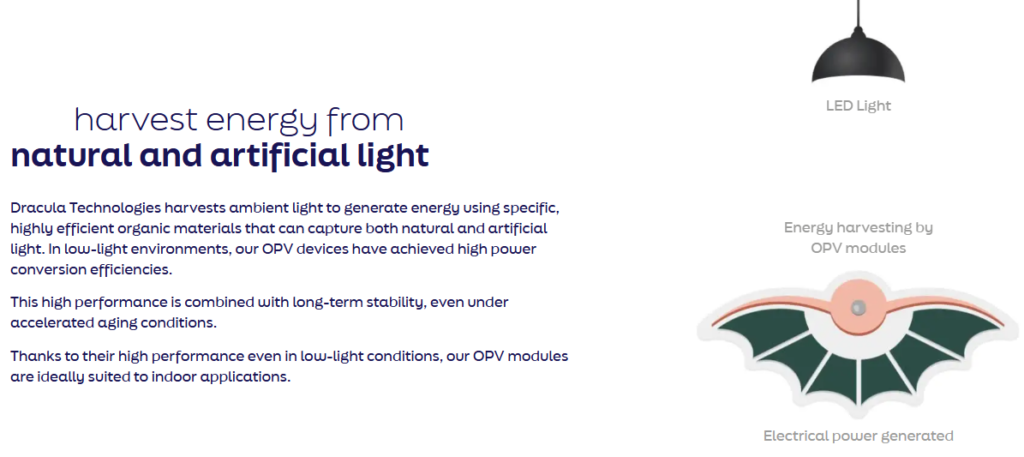Dracula Technologies, a French innovator in sustainable energy solutions, has developed LAYER®—short for Light As Your Energetic Response. This cutting-edge technology utilizes organic photovoltaic (OPV) modules to harvest energy from ambient light, even in low-light conditions, providing a viable alternative to traditional batteries for powering low-energy devices.
LAYER® is the world’s first free-form OPV module produced via inkjet printing. It converts indoor light—both natural and artificial—into electricity, making it ideal for powering Internet of Things (IoT) devices, wearables, and smart home sensors. The modules are ultra-thin, lightweight, flexible, and customizable in shape, allowing seamless integration into various product designs.
LAYER® employs a bulk heterojunction (BHJ) architecture, where a blend of organic donor and acceptor materials forms the active layer. This layer absorbs photons from light, generating electron-hole pairs (excitons). These excitons are then separated into free charges, which are collected to produce electric current. The modules are manufactured using inkjet printing, depositing organic inks onto substrates to create the photovoltaic layers.

LAYER®—short for Light As Your Energetic Response—is a proprietary organic photovoltaic (OPV) technology developed by the French company Dracula Technologies, headquartered in Valence, France. This innovative solution utilizes inkjet-printed OPV modules to harvest energy from ambient light, even in low-light conditions, providing a sustainable alternative to traditional batteries for powering low-energy devices.
Dracula Technologies has further advanced this technology with LAYER®Vault, which integrates energy harvesting and storage on a single flexible film, ensuring continuous power supply even in the absence of light.
The company has scaled up production through its state-of-the-art Green Micropower Factory, aiming to meet the growing demand for sustainable energy solutions in the IoT sector.
Key Advantages
- Low-Light Performance: Operates efficiently in lighting conditions as low as 50 lux, suitable for indoor environments .
Eco-Friendly: Made from organic materials without rare earths or heavy metals, reducing environmental impact .pv magazine International+4
Customizable Design: Inkjet printing allows for modules of various shapes and sizes, facilitating integration into diverse products
OPV stands for Organic Photovoltaics — a type of solar cell technology that uses organic (carbon-based) materials to convert light into electricity.
How OPV Works:
- Light Absorption: Organic semiconductors absorb light and create excitons (bound electron-hole pairs).
- Charge Separation: The excitons separate into free electrons and holes at a donor-acceptor interface.
- Charge Collection: These charges move to the electrodes, generating electric current.
Key Features of OPV:
- Lightweight & Flexible: Can be printed on plastic, making them bendable and easy to integrate into wearables, smart labels, or curved surfaces.
- Low-Light Efficiency: Performs well under ambient and indoor lighting (unlike traditional silicon solar cells).
- Eco-Friendly Manufacturing: Uses less energy and fewer rare materials than conventional photovoltaics.
- Customizable Form: Can be inkjet-printed into various shapes and designs — ideal for product
